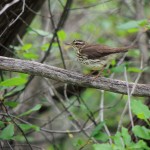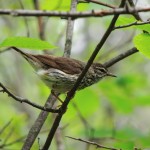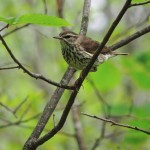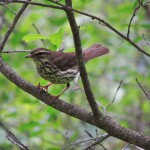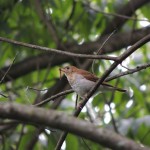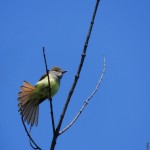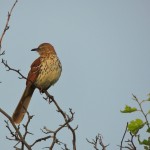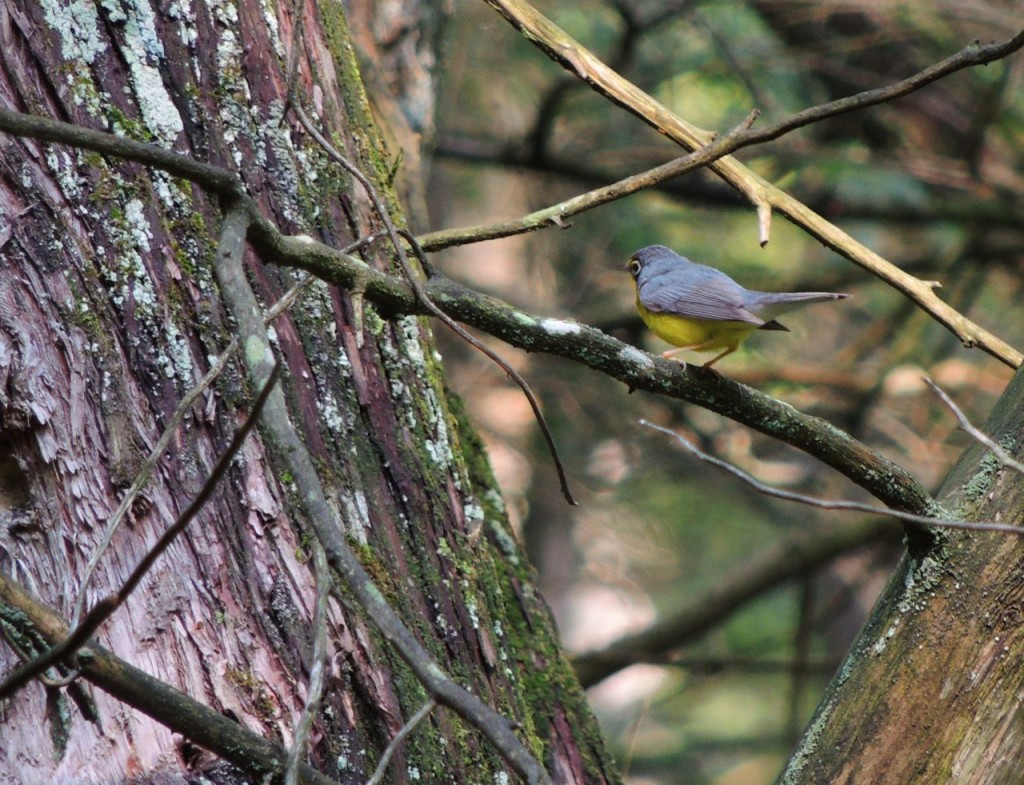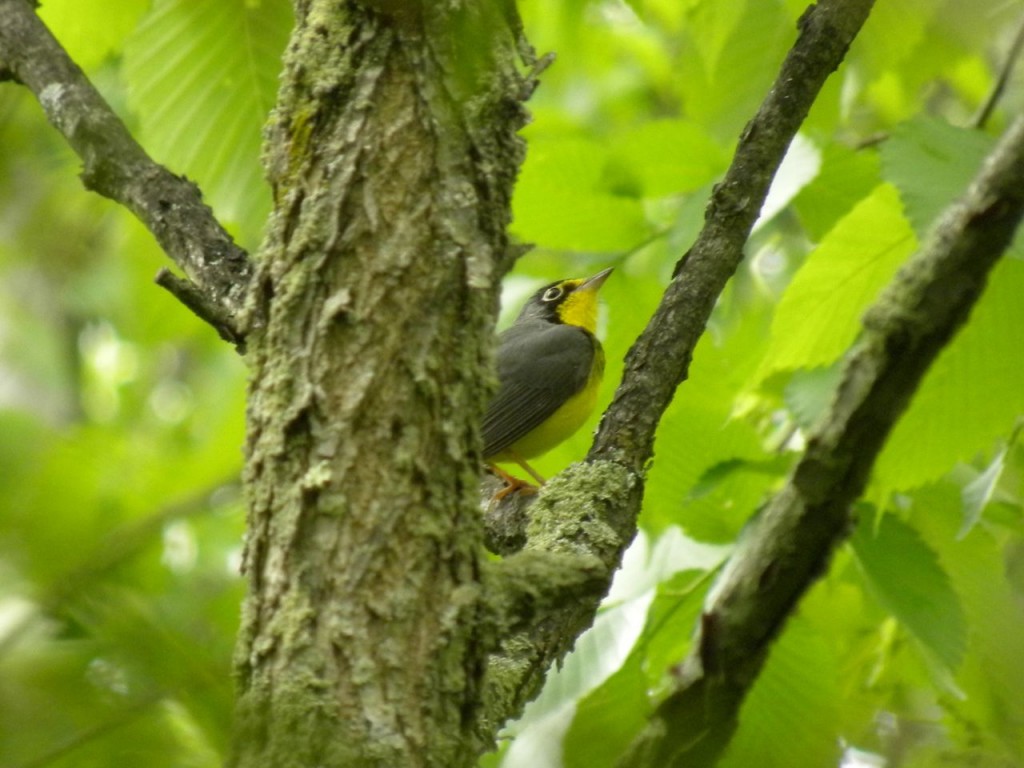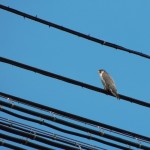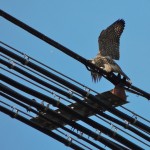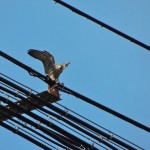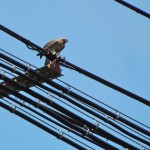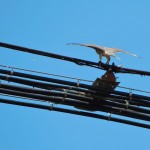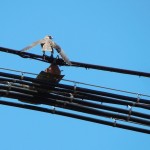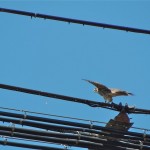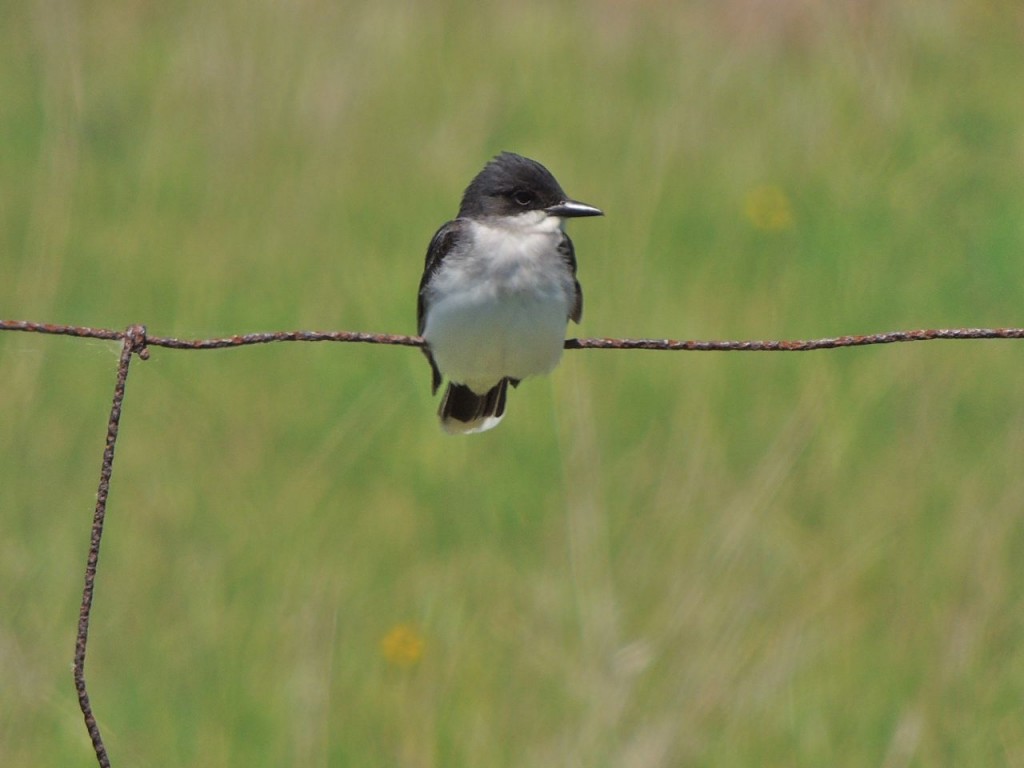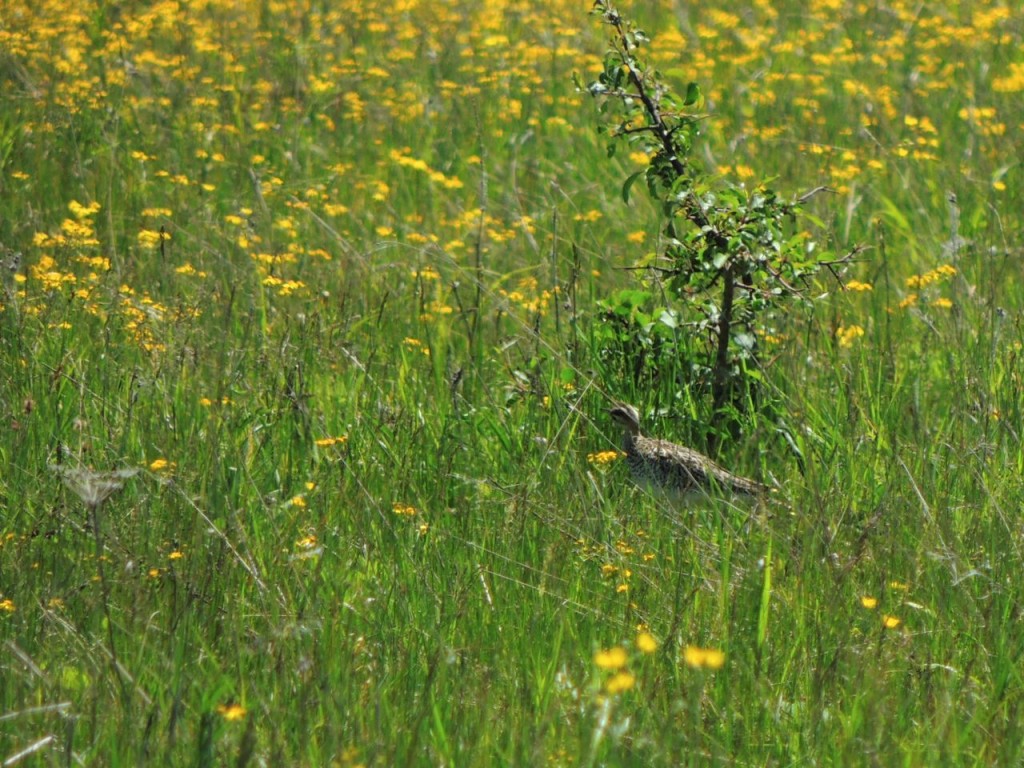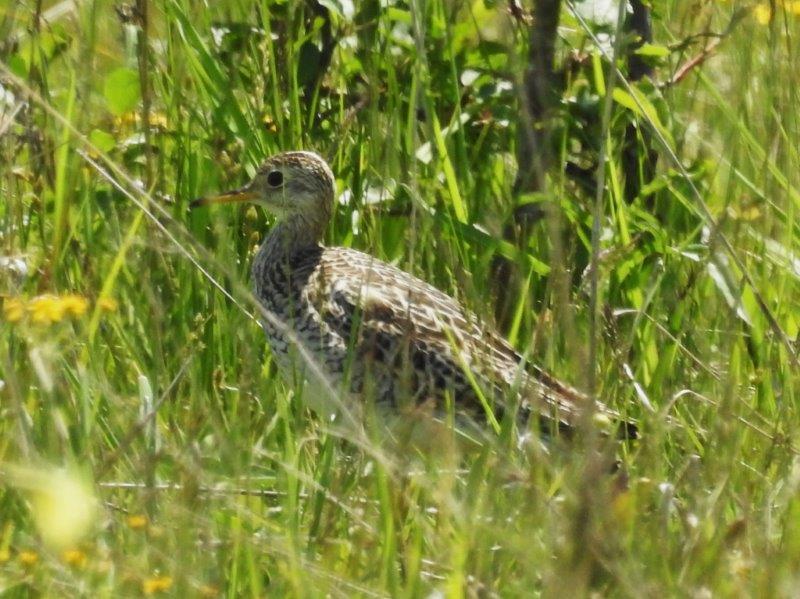13 June 2015. Flamborough ON. I started early and just couldn’t stop birding this morning, in fact morning was just a distant memory by the time I headed home. If May is the month when you have to be out there to see who’s just arrived, a sort of migratory rush hour, then June is when open-for-business begins. For the birder, mid-June is the perfect time to linger, listen and to see who’s where and doing what.
My day started while the air was still fresh. I parked atop a grassy hill with sweeping views. Around me were Brown Thrashers, Gray Catbirds, Song Sparrows, American Goldfinches and Bobolinks, all singing. A few Turkey Vultures sat quietly in a naked elm waiting for warmer airs to set them sailing for the day. This place would be delicious enough as is, but at some not-too-long-ago time, a thoughtful service club stationed a park bench at one of the most strategic of resting spots, silent of people and noisy of birds.
Nice as it was, I wasn’t there to write Victorian poetry, this was the starting point of a plan to walk several long trails. All of them in a township dotted with cool swamps and dark woods. I stuck to trails and roadsides that cut through mosquito-rich habitat with rivulets, brooks and creeks weaving through dense forest. Those common elements of running water and thick vegetation produced many of the same species at each stop, but that was quite okay.
Today’s Birds of the Day and probably the commonest, were Northern Waterthrushes. Their habitat of choice is dense, dark and wet woodlands and, were they not so vocal and demonstrative, you could easily overlook them. They and their close relative the Louisiana Waterthrush, are nominally members of the warbler family but are not nearly as colourful as some of their supposed cousins. They make up for it with a spirited song that penetrates the swampy thickets and when in the slightest bit agitated, if for example they see you as threateningly close to their hungry nestlings, they flit overhead and around you, frantically chipping and bobbing their tail. One anxious waterthrush parent is never enough, before long the other parent will appear and then others apparently to lend noisy support to the protest. Other than the challenge of keeping up with them, it wasn’t too hard to get some good photos. But being obliging to the camera was in contrast to a handful of Canada Warblers who were also heard but only fleetingly glimpsed in those same wet brushy areas.
My field notes from these areas of darkness and wet included Great Crested Flycatcher, Eastern Wood Peewee, Veery, Common Yellowthroat, Swamp Sparrow, White-throated Sparrow and even a Green Heron. There’s nothing in the species list that would turn heads, it was more a case of you had to be there.
